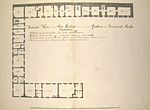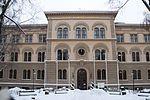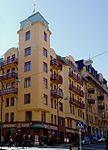Rosenkammaren
18th-century disestablishments in SwedenHistory of StockholmIndividual roomsSocial history of SwedenTorture ... and 1 more
Torture stubs
Rosenkammaren (literally: 'The Rose Chamber') was a torture chamber in the prison Nya smedjegården in Stockholm. It consisted of a long room, flooded with knee deep water from a spring. The prisoners sentenced to be tortured were chained by a hook from the ceiling in the knee deep water, which was normally icy cold. On 27 September 1772, torture was abolished by Gustav III of Sweden, and the Rose Chamber, along with the other torture chamber in the capital, Tjuvakällaren in the Town Hall (active 1471-1772), was closed and its equipment destroyed.
Excerpt from the Wikipedia article Rosenkammaren (License: CC BY-SA 3.0, Authors).Rosenkammaren
Barnhusgatan, Stockholm Norrmalm (Norrmalms stadsdelsområde)
Geographical coordinates (GPS) Address Nearby Places Show on map
Geographical coordinates (GPS)
| Latitude | Longitude |
|---|---|
| N 59.3361 ° | E 18.0558 ° |
Address
Barnhusgatan 14
111 60 Stockholm, Norrmalm (Norrmalms stadsdelsområde)
Sweden
Open on Google Maps










